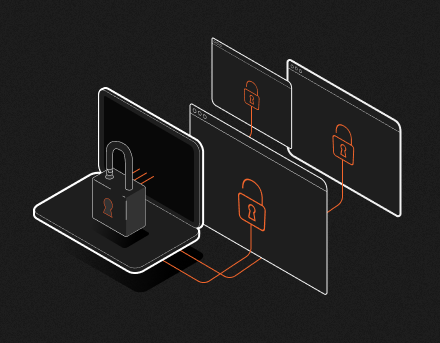What Is Federated Authentication?
Federated authentication, also known as federated identity, is a way of managing a user’s electronic identity, ensuring access to various resources and different applications with just one login authentication enhancing web application security.
Think of it this way: imagine that your email account, your favorite social network, and your music streaming service all belong to the same company. If that company uses traditional means of authentication, you will need to log in to three different systems at the beginning of the day if you want to listen to music while checking your emails and newsfeed. However, using a federated authentication system, you only log in once to an Identity Provider (IDP) and have guaranteed access to all three services without having to go through multiple authentication pages.

What Are the Benefits of Federated Authentication?
A federated authentication system generates unique digital identities assigned to each user. Thus, in a company, an employee uses the same digital identity to access the different systems that they need to use during the day: their corporate email, their companies’ time clock, and their stock control, for example.
This type of unique digital identity brings several benefits to companies that adopt it, such as:
-
Centralization: All user access data will be concentrated in a single digital profile, which drastically reduces the need to create different accounts and passwords for the same user;
-
Security: Users who need to create multiple access profiles tend to create passwords that are easier to remember. If the user has only one login for all systems, this can motivate them to create stronger passwords, bringing more security to their data and to the critical information they have access to;
-
Simplified management: Critical data such as access permissions are stored in digital identities, which simplifies the work of security teams, who will only need to configure these permissions once. In addition, if an employee leaves the company, all their permissions will be revoked by simply deleting their digital identity from the system;
-
Frictionless user experience: A user of a system with federated authentication only needs to log in once to gain access to all their work tools. This saves users the frustration of dealing with login screens multiple times a day, which also saves precious time;
-
Cost reduction: By reducing the workflow of security and technical support teams (who will deal less with problems of forgotten passwords, blocked users, and multiple profiles for each user registered on the network), companies also reduce their costs.
How Federated Authentication Improves User Experience and Security
As demonstrated in the previous section, federated authentication brings many benefits to users of cloud platforms and enterprise applications. By implementing Single Sign-On (SSO), organizations can provide additional protection and simplicity with just a few configuration steps. This approach allows users to enjoy the benefits of federated authentication across all connected services and applications.
Learn More About Federated Authentication and Other Security Tools
Federated authentication is just one of many modern security approaches that can enhance your organization’s security posture while improving the user experience. By allowing users to access multiple systems or services using a single set of credentials—often managed by an identity provider such as Google, Microsoft, or Okta—federated authentication reduces the need for multiple username and password combinations. This not only simplifies the login process for users but also helps to mitigate risks related to password fatigue and weak credential management, making unauthorized access more difficult for attackers attempting credential stuffing or phishing attacks.
Alongside federated authentication, organizations can leverage a suite of security tools to further strengthen their defenses. Tools such as Multi-Factor Authentication (MFA), Single Sign-On (SSO), robust identity and access management (IAM) platforms, and advanced threat detection systems all play a crucial role in a layered security strategy. For example, MFA requires users to confirm their identity with additional verification methods, such as a mobile app or biometric scan, greatly reducing the likelihood of breaches even if credentials are exposed. Together, these approaches create a more resilient security environment and help ensure that only authorized users can access sensitive resources, all while maintaining a smooth and efficient user experience.
Would you like to learn more about our federated authentication feature or other security and productivity tools? Read now and find out how Azion can help your digital revolution at the edge.